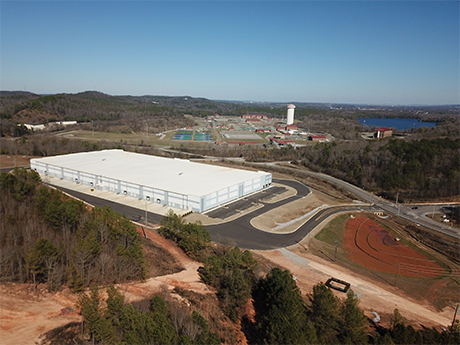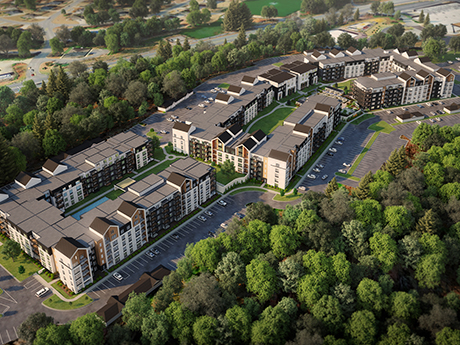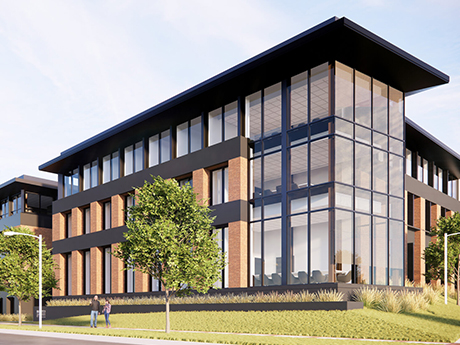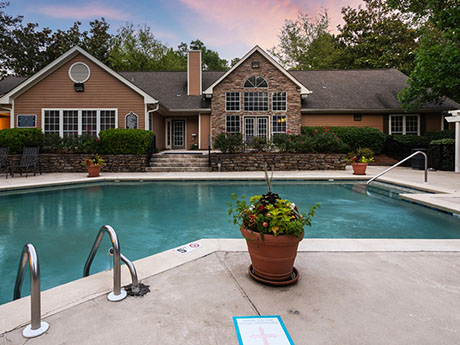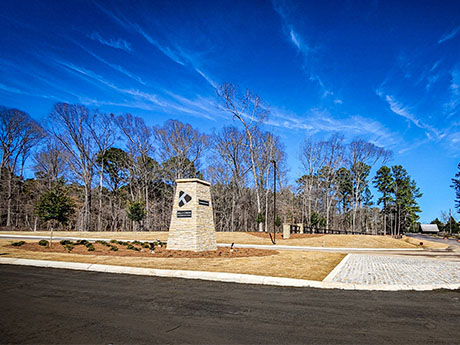Birmingham’s office market is holding its own with overall market occupancy at 82.6 percent as of fourth-quarter 2024. We saw a slower second half of the year, but that is to be expected during a presidential election year when companies often hit pause on significant real estate decisions. During the fourth quarter, Birmingham’s multi-tenant office market recorded negative absorption of 67,739 square feet, but that was a notable improvement from the negative 268,061 square feet recorded the previous quarter. Leasing activity for the quarter came in at 180,849 square feet, bringing the year-to-date total to just over 562,000 square feet — about 22 percent below the previous year’s pace. While definitely a slowdown, this performance is nothing out of step with the broader national trends. Signs of positive momentum The good news? Since the start of 2025, activity has picked up across the board. Tenants are back in the market touring space and rethinking their long-term office needs. Some are expanding, some are rightsizing to space that better fits how they work today and others are updating their office protocols to bring employees back in more regularly — all of which is driving movement in the market. In addition, several …
Market Reports
Birmingham’s retail market continues to demonstrate resilience despite national economic challenges. With a vacancy rate of 3.8 percent — slightly below the national average of 4.1 percent — and rental rates holding steady at $13.13 per square foot, the city remains an attractive destination for both investors and tenants. However, rising interest rates have slowed development and softened transaction volumes, reshaping the investment landscape. Macroeconomic trends The intersection of economic pressures and shifting consumer habits is redefining Birmingham’s retail landscape. Across the nation, big-box retailer bankruptcies have contributed to negative net absorption of 346,200 square feet over the past year, and Birmingham has felt similar effects. The closure of Conn’s HomePlus, among other retailers, has contributed to this contraction. Despite these challenges, suburban retail demand remains robust. Homewood, Hoover and Alabaster are experiencing continued growth, and Crestwood Festival Shopping Center has added new tenants like Fun City Adventure and Armor Gym occupying 100,000 square feet. These trends highlight the increasing popularity of experiential retail, as consumers gravitate toward destinations that offer more than just traditional shopping. Development slows New retail construction has slowed significantly, with only 130,000 square feet delivered in the past year — well below historical averages. However, …
The Birmingham industrial market is poised for an increase in absorption as the apex of higher interest rates seem to be settling down, not to mention the post-election certainty that now favors business expansion. Corporate America is waking up and the clouds are clearing. For the past 24 months, the competitive set of investor-controlled warehouse space has been sitting on about 2 million square feet of inventory. About 550,000 square feet of that is still unleased speculative space in three different projects delivered at the back-end of the post-COVID development wave that did see about 700,000 square feet of absorption of new spec space before the music metaphorically stopped. Then came the 2023/2024 wave of the “new spec space,” a byproduct of the mentioned interest rates and COVID over-correction. Several second-generation spaces are now being marketed as companies vacated or downsized for various reasons. For example, discount retailer Dollar General is vacating an entire 307,000-square-foot warehouse. Broader, there have been two major announcements in Central Alabama for the closure of distribution centers, both as a result of retailers’ bankruptcies. JoAnn Fabric’s 700,000-square-foot distribution facility in Opelika at I-85 is now on the market as is the 1.2 million-square-foot former …
Limited Construction Starts Should Help Birmingham Absorb Available Apartments in 2025
by John Nelson
Southeast Real Estate Business recently caught up with John McCrary, director of investment sales in Berkadia’s Birmingham office, to discuss trends in the local apartment market. McCrary, who specializes in investment sales in Alabama, east Tennessee and southern Mississippi, says that Birmingham’s occupancy will likely take a hit as new deliveries hit the market in the first half of the year, but there’s optimism that renters will be able to absorb those availabilities in short order. “With approximately 800 units expected to be delivered at the beginning of 2025, vacancy rates are likely to rise throughout the year,” says McCrary. “However, the slowdown in construction starts should help absorb existing units and eventually reduce the elevated vacancy rate.” The following is an edited interview: Southeast Real Estate Business: What major local or macro-economic trends are affecting the multifamily market in Birmingham? John McCrary: The interest rate environment is a key factor influencing multifamily dispositions, both in the Southeast and nationwide. Fluctuations in interest rates impact borrowing costs for developers and investors, thereby affecting the supply and demand for multifamily properties. Over the past year, Birmingham has seen strong multifamily demand, but it hasn’t kept pace with the influx of new …
By Henry Graham of Graham & Co. As a reminder to those who may have missed my colleague Sonny Culp’s article from last year, 2021 and 2022 saw the delivery of more than 10 sizable build-to-suits to the Birmingham/Central Alabama region. Such rapid growth in the industrial sector grabbed the attention of larger industrial developers that have generally allowed Birmingham to fly under the radar. Case-in-point, in the years from 2008 through 2016, the greater Birmingham metropolitan area was essentially devoid of any speculative industrial development. Instead, the pipeline of industrial projects was centered around owner-occupied spaces and the occasional build-to-suit related to the automotive sector or light manufacturing. On the tailwinds of the recent build-to-suit frenzy and COVID-fueled supply demands, Birmingham experienced a flurry of speculative activity in 2022 and 2023 as regional and even national developers like Scannell Properties tested the waters alongside Alabama-based industrial developers. Along a half-mile stretch of Daniel Payne Industrial Boulevard that sits just north of the central business district (CBD) and not far from the intersection of I-65 and I-20/59, four Class A spec buildings came up in rapid succession totaling 737,000 square feet. Two of those buildings are now fully leased …
By Chapman Brown of Marcus & Millichap Once renowned for its industrial prowess, Birmingham is experiencing a dynamic retail renaissance fueled by a convergence of local economic growth, strategic development initiatives and shifting consumer behaviors. As major retail projects come to fruition and submarkets heat up with investment activity, the city is poised for a transformative period that promises to redefine its retail landscape. Birmingham’s retail sector is intricately linked to broader economic trends both locally and nationally. Factors such as population growth, employment rates and disposable income levels significantly influence consumer spending habits and retail demand within the city. Additionally, the rise of e-commerce and changing demographics are prompting retailers and developers to adapt and innovate to stay competitive. These factors, combined with a diverse array of buyers and sellers, are driving retail investment activity. Institutional investors, private equity firms and real estate developers are among the key buyers, attracted by the city’s strong fundamentals and growth prospects. On the selling side, property owners and developers are seizing opportunities to unlock value and redeploy capital into new ventures. Several major retail projects are currently underway, poised to leave a lasting impact on the market. One notable project is The …
By David Wilson of Berkadia Birmingham’s apartment market has softened, which is consistent with trends both nationally and regionally in other Southeastern metros. But the market remains healthy and balanced despite a bump in new construction. With total employment gains exceeding 18,000 in 2023, a substantial jump from the 5,500-person gain in 2022, and unemployment rate falling to 2.2 percent, the Birmingham economy is as strong as it’s been in over 10 years, and the economic outlook is very favorable. The majority of population growth has been in the southern areas such as Shelby County, although a steady delivery of new Class A apartments in downtown Birmingham in recent years, and the opening of a Publix grocery in 2017 on the ground level of the 436-unit 20 Midtown development, is helping the city core to grow. Research by Berkadia Birmingham reveals 12 properties comprising 2,936 units are under construction in the Birmingham area, excluding Tuscaloosa. These properties reflect a cross-section of product types such as a purpose-built student property and an affordable Low-Income Housing Tax Credit (LIHTC) property. Four are in their initial site work phase, while another four are beginning preleasing. New developments In the thriving Highway 280 submarket, …
By Brad Jones of Cushman & Wakefield/EGS Commercial Real Estate Despite ongoing challenges facing the national economy, Birmingham’s commercial real estate landscape remains steady and consistent. Over the past seven years, encompassing both pre- and post-pandemic periods, the overall vacancy rate for Birmingham’s multi-tenant office market has exhibited fluctuations like most markets, ranging from 12.9 percent in 2017 to 19 percent in 2023, according to research from Cushman & Wakefield/EGS Commercial Real Estate. However, for perspective, Birmingham’s year-end vacancy rate of 19 percent remains below the national average vacancy rate of 19.7 percent recorded in 2023, according to research from Cushman & Wakefield. Office leasing activity in Birmingham has maintained momentum, experiencing a notable 12 percent year-over-year increase from 2022. Total leasing activity for 2023 totaled 718,219 square feet. Class A transactions dominated with 564,681 square feet leased, indicating a continued preference for Class A office space (i.e. a flight to quality). This is good news for Class A product in this supposed period of economic slowdown. Office investment sales activity in Birmingham has, however, decelerated in the current economic climate. The impending ripple of debt maturities poses challenges for large institutional owners and creditors. At the same time, it …
When we wrote about the Birmingham multifamily market last year, the main trends were job growth and in-migration to not only the Birmingham market, but the Sun Belt as a whole. The growth was described as “unprecedented,” which it certainly was, and investor optimism could not have been higher as cap rates plummeted and property performance continued to thrive. Since then, the 10-year Treasury yield has risen nearly 200 basis points, inflation experienced nearly 6.5 percent growth last year and there was a more cautious optimism going into the fourth quarter of 2022. But what if we are not hitting a stopping point, rather moving back into a cycle of normalcy? Amongst the many major indicators for 2023, the common theme appears to be uncertainty. Many notable factors such as debt and rising insurance costs have been a sounding board for this skepticism in the market. 2021 and 2022 proved to be nothing short of record-breaking in the multifamily sector. For Birmingham, our outlook is that the solid foundation it has built over the past few years, and the post-pandemic recovery boom it experienced, will show that the city is still poised for growth and has been fortunate to not …
Before we look at the current happenings in the Birmingham industrial market, it is worth glancing into the rearview mirror of the last 24 months or so. 2021 and 2022 saw the delivery of 10 notable industrial build-to-suit projects. Some were announced in 2020 before pricing surges. The last delivery of these projects was completed in fourth-quarter 2022, an automotive project on the west side for Lear Automotive Seating oriented toward Mercedes-Benz. This unprecedented streak of projects totaled 3.3 million square feet. In addition to Lear, tenants included: Lowes, Mercedes-Benz, Motion Industries, TSF Sportswear, Samuel, Son & Co., Amazon (two) and FedEx Ground. Interestingly, two of these facilities are now available for sublease and were never occupied by the tenant. And as of this writing, there is not a single industrial build-to-suit announced or under construction. What did follow the noted build-to-suit wave were six speculative (or partial speculative) projects. The first one delivered — the first phase of Crossroads Commerce Center in the Central submarket — spanned 186,000 square feet, and the twin second phase was recently completed. The two phases are now 75 percent occupied, demonstrating market demand shown in other Southeastern markets in mid-2022 and prior. In …
Newer Posts





